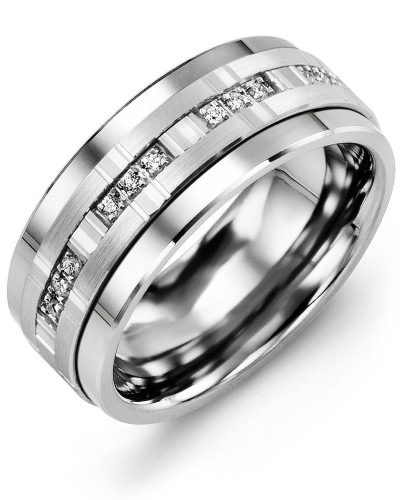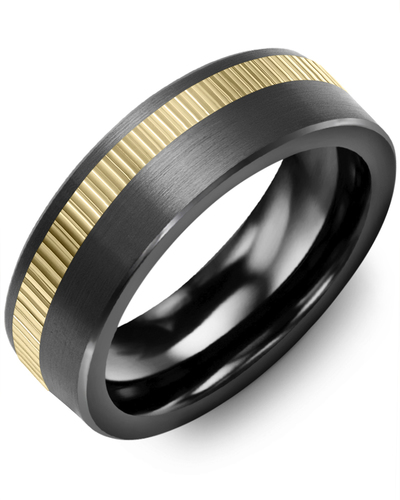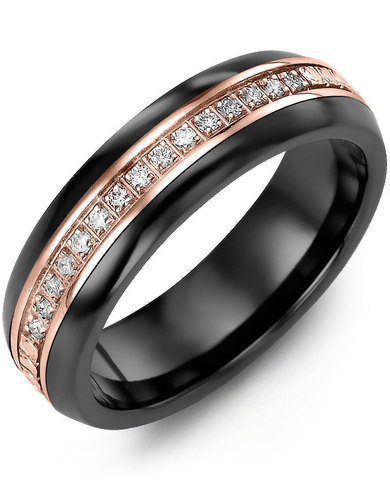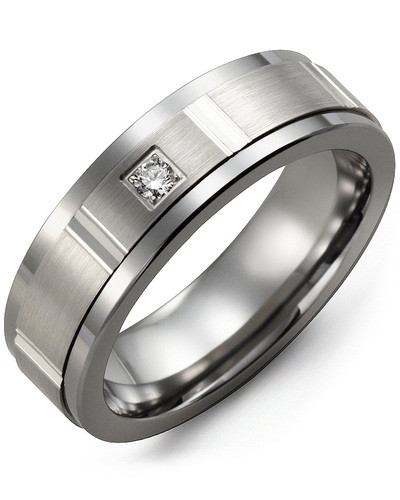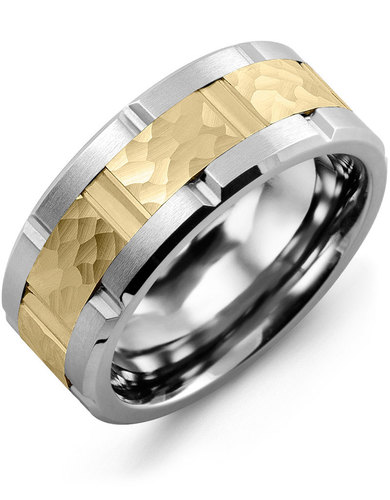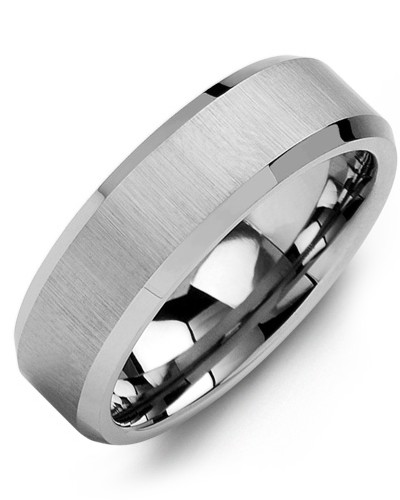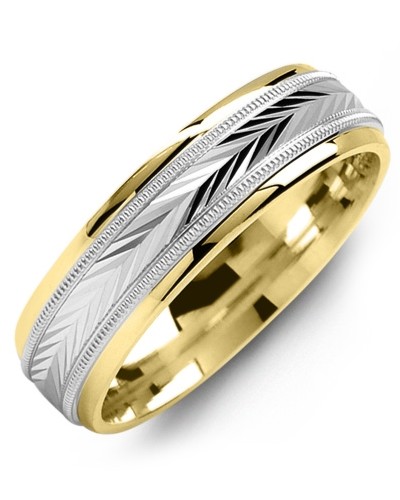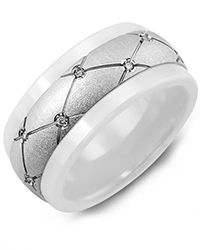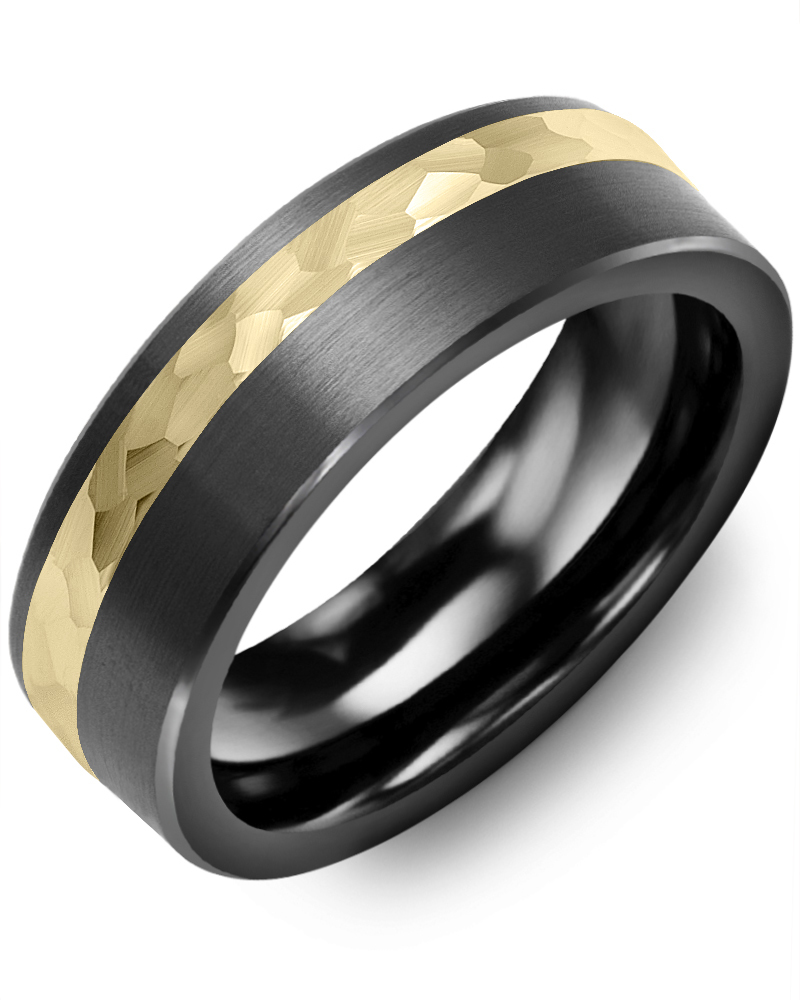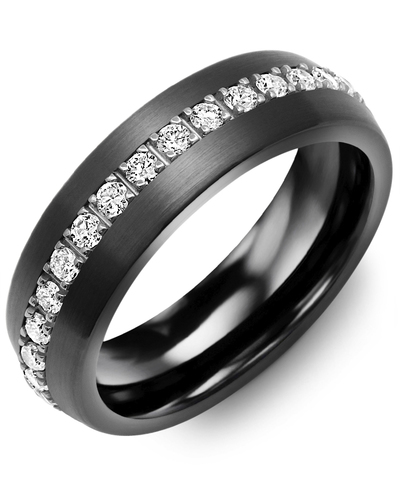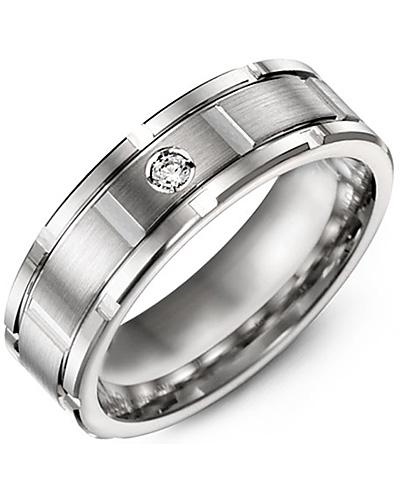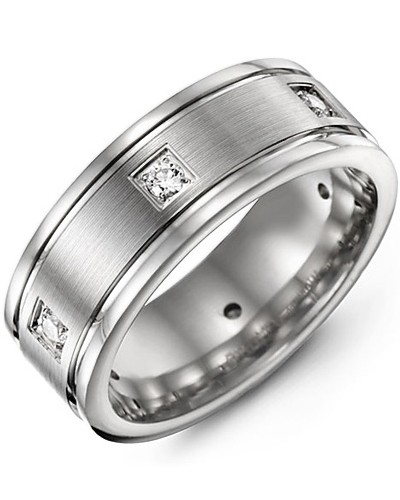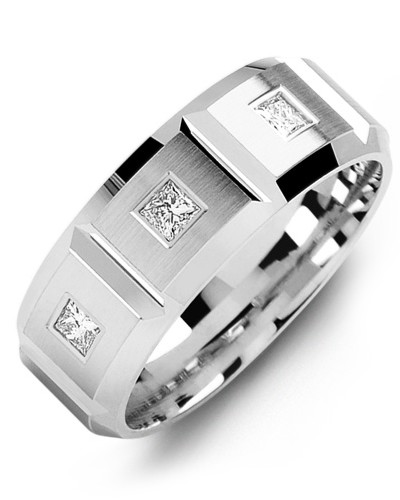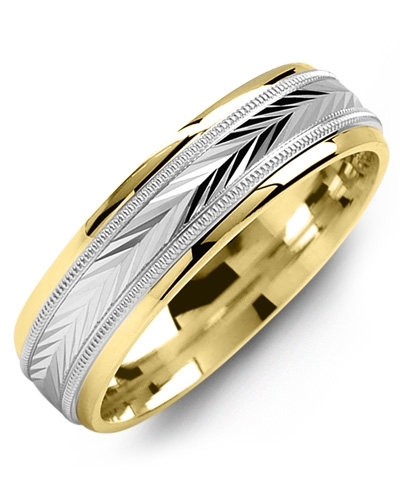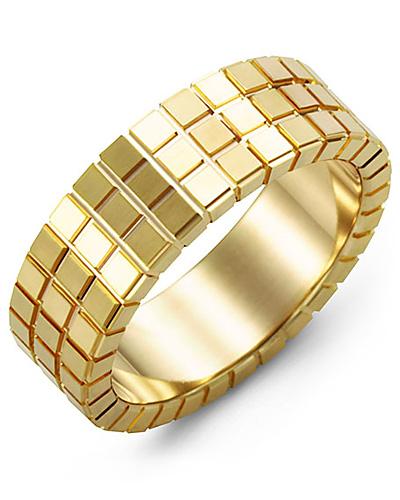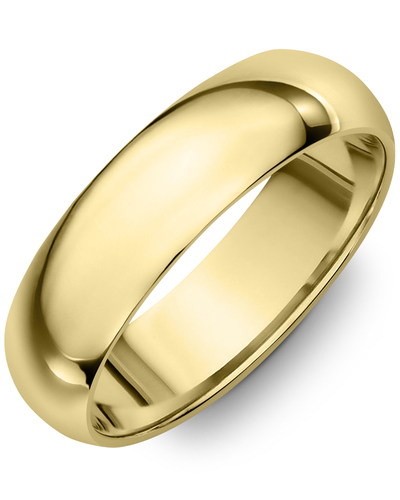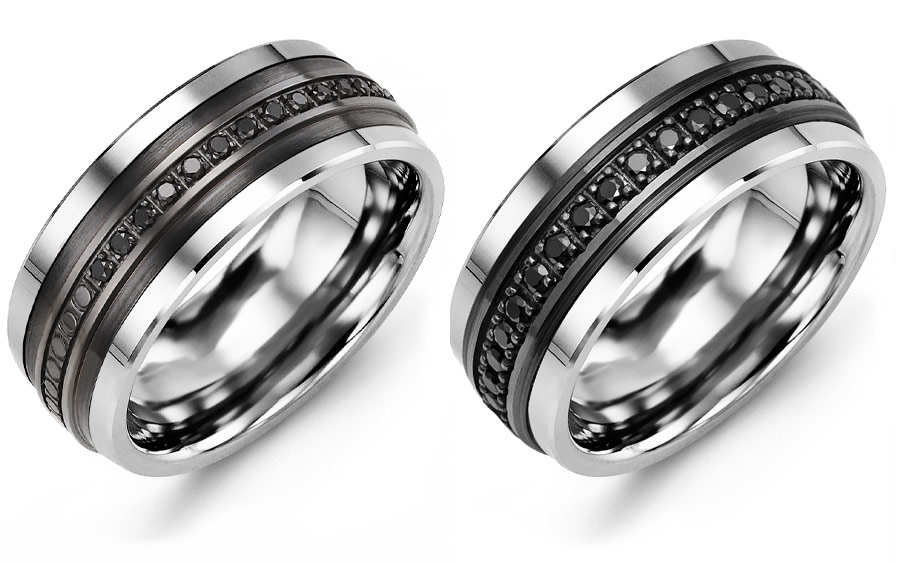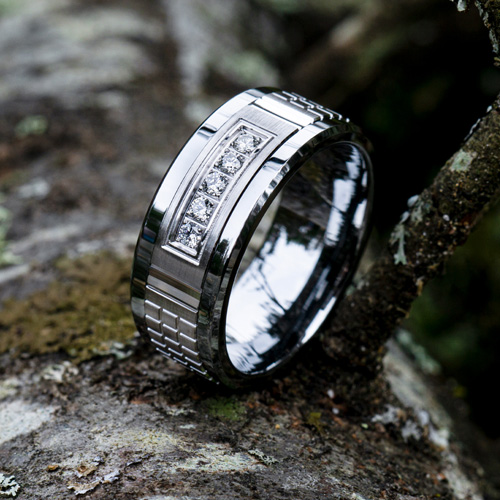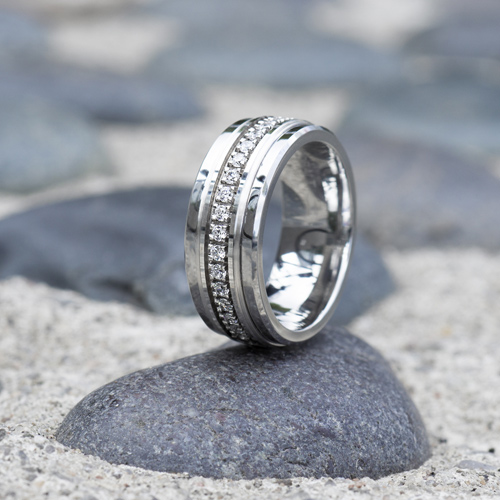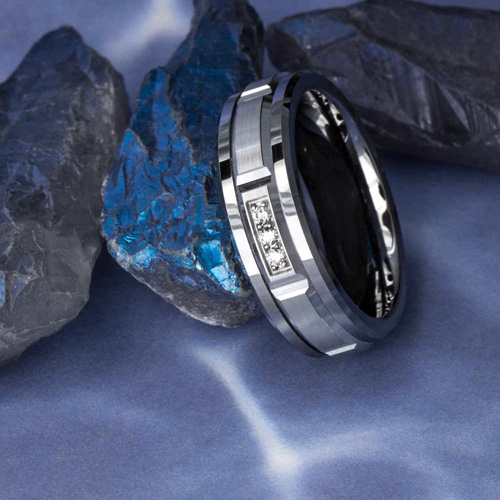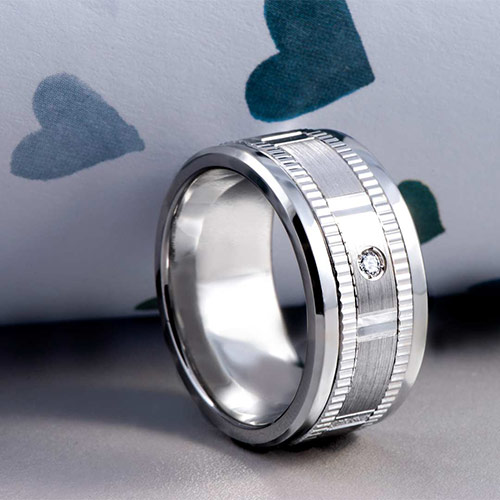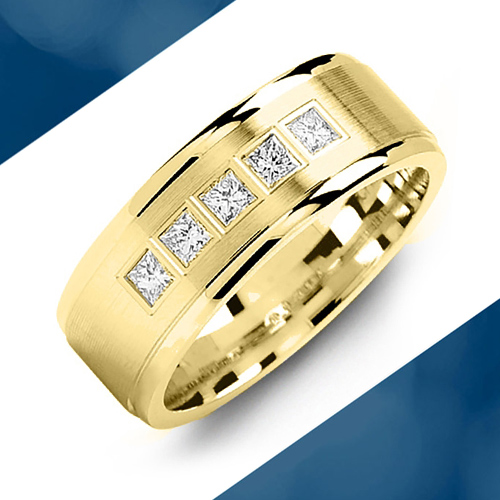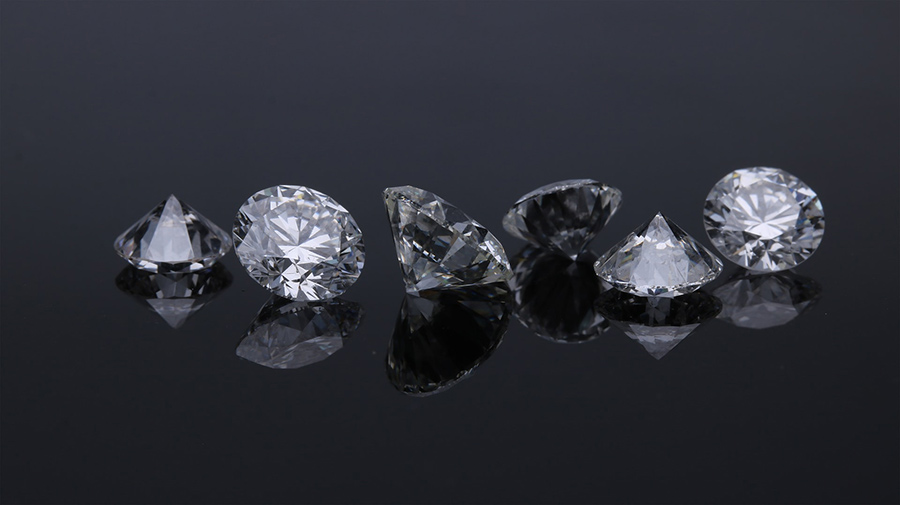
As the big day approaches, engagement bands must now become wedding bands. And when choosing a wedding band, the precious metal used to forge the circle or ring – a symbol for forever – is made more meaningful with the addition of a diamond. A diamond is a symbol of eternity, which means careful consideration should be taken in order for hubby-to-be to make the right statement on the big day.
---
Carat vs Size – What’s the Difference?
One of the biggest considerations when picking a diamond for future hubby’s wedding band, apart from diamond settings, carats, cuts, clarity, and diamond color and shapes, is size. Another one is the type of setting. But before we delve deeper into that, let us clear the confusion surrounding carat and size.
Many people use the words carat and size interchangeably when talking about diamonds, but the two aren’t the same. Carat measures how much a diamond weighs, usually in grams (g) or carats (ct), while the size is the millimeter (mm) or point (pt) measurement of the diamond. It is important to understand that diamonds of the same carat don’t always have the same size. Some shapes, such as pear and oval, can make a diamond look bigger even if it has fewer carats than the one next to it.
Carats are also considered to be an indicator of how much a diamond will cost. The higher the carats, the more expensive the diamond is. Other factors such as color, clarity, and cut can affect the price. Even though a diamond may be larger, it could cost less than a lesser size that is high in color, clarity, and cut, whereas the larger diamond may not be so high on those aspects.
What Diamond Sizes Are Available for Men’s Wedding Bands?
When measuring our diamonds we use points instead of grams. Our diamonds for men’s wedding bands are usually found in the following point sizes:
- 1pt (1.25mm)
- 2pt (1.70mm)
- 3pt (2.0mm)
- 5pt (2.3mm)
Besides the size, you can also pick between two diamond colors: regular white diamond and black diamond. We can always custom make a ring with much larger diamonds. Since all our rings are make-to-order, there is opportunity for customization in all aspects of the ring. If you really want a larger diamond, just ask and we can make it happen if the style will allow for it.

Do Bigger Diamonds Sparkle More?
Everyone wants a diamond that sparkles. This is for good reason, considering that a diamond’s sparkle can provide a spectacular light show that is truly breathtaking, depending on how it interacts with the light around you. Common sense would tell us that the bigger the diamond is, the more it will sparkle. But as we all know, common sense can be wrong. The way a diamond reflects and absorbs light is a function of its cut rather than its size. If the cut of a 1pt diamond is similar to that of a 2pt diamond, they will sparkle the same way. The diamond’s reflective power usually comes down to its facets (interior surfaces) and angles, which are determined by the quality of the cut.
Basically, when light enters the diamond and travels through it, it bounces off the facets before leaving as either white light or “fire.” Fire refers to the spectrum of colors the diamond gives off – the colors are similar to the ones found in a rainbow. Basically, more facets mean more sparkle.
We offer two cuts for men’s wedding bands: the round cut and the princess cut. A round cut diamond is the traditional type of diamond, with 58 facets and a symmetrical shape. On the other hand, the princess cut is square-shaped with 57 facets and cut from rough stone. When talking about round vs square in terms of size and sparkle. Round cuts tend to be bigger, and they have fewer flaws and better clarity, which makes them interact better with light and out-sparkle the rest.
When Does Size Matter?
While size doesn’t really matter when it comes to sparkle, it does matter when it comes to other things. Here are some of them:
Location
The size of a diamond can dramatically change the way it looks. Considering that you want him to wear the band every day and everywhere, where you stay plays a big role in determining what size diamond to get for his wedding band. If you live in an area that embraces a luxurious and glamorous lifestyle, you might want to go big. But if you are in a rural area with reserved people, a smaller diamond may be the way to go. The same goes for where the groom-to-be works and his social circles. Do they appreciate fine jewelry or not? If they do, then flaunting a bigger diamond will be the perfect display of his eternal love.
Look of the Band
If you want to draw more attention to the size of the stones instead of the band, a bigger diamond will definitely get noticed. For example, the 2pt diamonds of the RLS gives the band a bigger diamond feel than the MKQ. And with bigger diamonds, you need less to make a statement, as with the case with the RLW's 2pt diamonds compared to the MJK’s 1pt diamonds.
Comfortability
As mentioned earlier, this is something he will be wearing every day, so it goes without saying that he needs to find it comfortable. Every time he feels it on his finger should effortlessly remind him that he is a happily married man.
Budget
Bigger diamonds aren’t always expensive. If you are looking for something big, you can find something within your budget. However, you might have to sacrifice clarity and color to get it.
Diamond Setting Options For Men
Diamond settings are another important consideration when choosing wedding bands for men. A setting refers to how the diamond is mounted into the precious metal of the wedding band. This can change the way the diamond looks and feels dramatically.
Square 4 Prong Setting for Round Diamonds
This is the most popular setting for our wedding bands. The round diamonds are not as thick and expensive as princess cut diamonds. Allowing more flexibility on pricing and design. Clients love the square look with a round diamond. The 4 prongs secure the diamond very well to ensure that it does not fall out and will last a lifetime.
Eternity Setting (Multiple Diamonds of Square Setting in a Row)
This is like the square setting but instead of just 1 square it continues like a channel setting for 10, 15, or 45 diamonds depending on the diamond size. The four prongs will cover each diamond and continue until the eternity design is complete.
Shared Claw Setting
For some of our styles like MDM, we use a shared claw setting due to the style and/or diamond size. As you can see in this picture, this style has 3 diamonds and the claws are being shared between all 3. Instead of 4 claws per diamond, each diamond will have 2 claws securing it in place. This is not to say they won’t be durable and last long, if done right, the shared claw setting can hold the diamond very securely.
Gypsy Setting for Round Diamonds
This is the 2nd most popular setting for our diamond bands. Instead of the 4 prong square design, in this case we drill a hole into the precious metal with a nice shiny bezel. The diamond setter then creates prongs or gold to hold the diamond by carving gold over on top of the diamond. It almost looks like the diamond is being held invisibly.
Square Setting for Square Princess Cut Diamonds
This square setting does not use any prongs like the Gypsy setting. The square hole is made with our CNC machines, making sure the place the diamond will sit is exactly the same size as the diamond. The diamond setter will then carved gold from the edge of the square on top of the diamond to secure it. This is something you can’t see with the naked eye and again looks almost invisible.
Wrapping Up
When shopping for a man’s wedding band, size is a big consideration. A good cut will sparkle brilliantly despite the size, but you might want to consider location, comfortability and budget when picking a size. But no matter the size diamond you pick, we will work with you to ensure your man get’s the wedding band that makes your day truly special. If you’d like some tips or advice on buying a wedding ring, Madani can help. Click here to browse our range of wedding rings, or get in touch with any questions you have.
